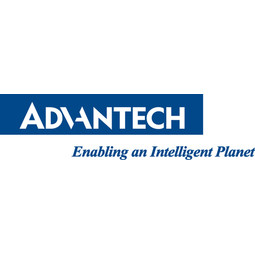公司规模
Large Corporate
地区
- America
国家
- United States
产品
- Advantech SRP-FPV240 ThinManager-Ready Solution
技术栈
- ThinManager software
- MES and ERP systems
实施规模
- Enterprise-wide Deployment
影响指标
- Productivity Improvements
- Cost Savings
技术
- 平台即服务 (PaaS) - 数据管理平台
- 应用基础设施与中间件 - 数据交换与集成
适用行业
- 药品
适用功能
- 离散制造
- 质量保证
用例
- 预测性维护
- 资产健康管理 (AHM)
服务
- 系统集成
关于客户
客户是一家位于美国的医药初级包装容器制造商。该公司受 FDA 监管,必须遵守严格的法规以确保消费者安全。该制造商经营四个生产基地,以前由公司总部远程管理。由于生产流程过时,这一流程变得越来越不可持续。该公司需要一种解决方案,使他们能够集中管理所有流程可视化应用程序,使他们能够从总部远程进行关键调整。这不仅可以节省公司有限的 IT 资源,还可以确保所需的可追溯性和法规遵从性。
挑战
制药行业受到严格监管,制造商必须保持严格的质量控制以确保其产品的安全。一家药品包装生产商亲身体验了过时生产流程的成本。由于需要管理四个生产基地,公司总部发现远程流程越来越难以为继。制造商需要一种集中管理所有流程可视化应用程序的方法,以便可以在总部远程执行关键调整,从而节省公司有限的 IT 资源,同时仍确保所需的可追溯性和法规遵从性。
解决方案
研华的 SRP-FPV240 是基于与罗克韦尔自动化创新型 ThinManager® 软件完全兼容的瘦客户端选项而开发的。通过与现有 MES 和 ERP 无缝集成,ThinManager 允许用户从单个界面管理所有服务器应用程序和监控会话。凭借多显示器支持、虚拟屏幕、阴影、会话缩放和屏幕平铺支持,该软件提供了自定义来自多个来源的数据呈现和可视化所需的所有功能。ThinManager 的功能使研华的 SRP-FPV240 成为在智能工厂内构建可扩展数据管理系统的最佳平台。它简化了瘦客户端工作流程并减少了硬件操作。SRP-FPV240 扩展了瘦客户端功能,并通过集中管理和即插即用支持促进了更大的垂直集成,从而提高了可靠性、安全性和维护效率。
运营影响

Case Study missing?
Start adding your own!
Register with your work email and create a new case study profile for your business.
相关案例.

Case Study
Case Study: Pfizer
Pfizer’s high-performance computing software and systems for worldwide research and development support large-scale data analysis, research projects, clinical analytics, and modeling. Pfizer’s computing services are used across the spectrum of research and development efforts, from the deep biological understanding of disease to the design of safe, efficacious therapeutic agents.

Case Study
Fusion Middleware Integration on Cloud for Pharma Major
Customer wanted a real-time, seamless, cloud based integration between the existing on premise and cloud based application using SOA technology on Oracle Fusion Middleware Platform, a Contingent Worker Solution to collect, track, manage and report information for on-boarding, maintenance and off-boarding of contingent workers using a streamlined and Integrated business process, and streamlining of integration to the back-end systems and multiple SaaS applications.

Case Study
Process Control System Support
In many automated production facilities, changes are made to SIMATIC PCS 7 projects on a daily basis, with individual processes often optimised by multiple workers due to shift changes. Documentation is key here, as this keeps workers informed about why a change was made. Furthermore, SIMATIC PCS 7 installations are generally used in locations where documentation is required for audits and certification. The ability to track changes between two software projects is not only an invaluable aid during shift changes, but also when searching for errors or optimising a PCS 7 installation. Every change made to the system is labour-intensive and time-consuming. Moreover, there is also the risk that errors may occur. If a change is saved in the project, then the old version is lost unless a backup copy was created in advance. If no backup was created, it will no longer be possible to return to the previous state if and when programming errors occur. Each backup denotes a version used by the SIMATIC PCS 7 system to operate an installation. To correctly interpret a version, information is required on WHO changed WHAT, WHERE, WHEN and WHY: - Who created the version/who is responsible for the version? - Who released the version? - What was changed in the version i.e. in which block or module of the SIMATIC PCS 7 installation were the changes made? - When was the version created? Is this the latest version or is there a more recent version? - Why were the changes made to the version? If they are part of a regular maintenance cycle, then is the aim to fix an error or to improve production processes? - Is this particular version also the version currently being used in production? The fact that SIMATIC PCS 7 projects use extremely large quantities of data complicates the situation even further, and it can take a long time to load and save information as a result. Without a sustainable strategy for operating a SIMATIC PCS 7 installation, searching for the right software version can become extremely time-consuming and the installation may run inefficiently as a result.

Case Study
ELI LILLY ADOPTS MICROMEDIA’S ALERT NOTIFICATION SYSTEM
Pharmaceutical production is subject to a strict set of enforced rules that must be adhered to and compliance to these standards is critically necessary. Due to the efforts of WIN 911’s strategic partner Micromedia, Lilly was able to adopt an alarm notification infrastructure that integrated smoothly with their existing workflows and emergency hardware and protocols. These raw energy sources enable the industrial process to function: electricity, WIN-911 Software | 4020 South Industrial Drive, Suite 120 | Austin, TX 78744 USA industrial steam, iced water, air mixtures of varying quality. Refrigeration towers, boilers and wastewater are monitored by ALERT. Eli Lilly identified 15000 potential variables, but limitations compelled them to chisel the variable list down to 300. This allowed all major alarms to be covered including pressure, discharge, quantity of waste water discharged,temperature, carbon dioxide content, oxygen & sulphur content, and the water’s pH.









